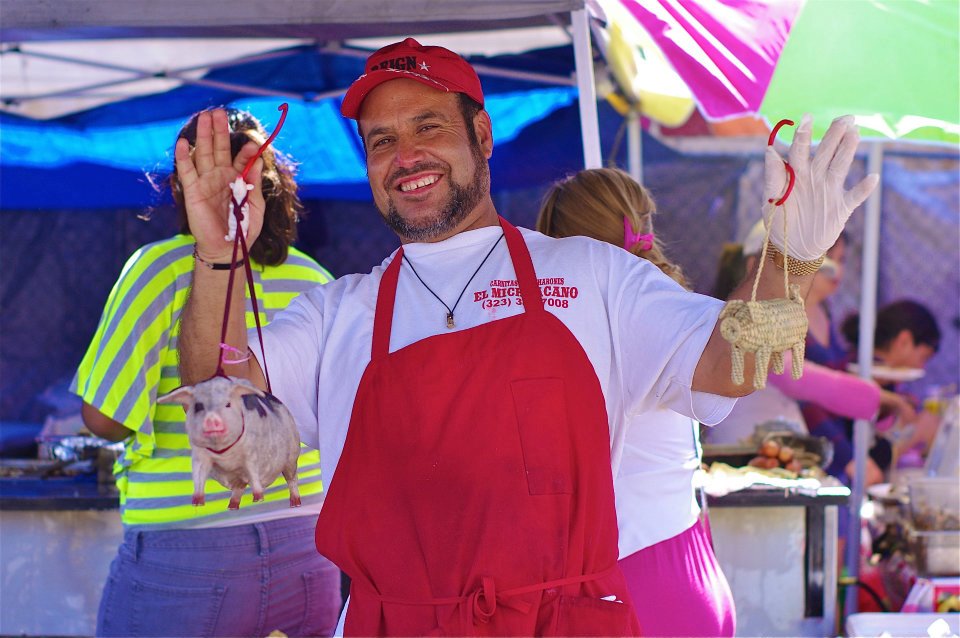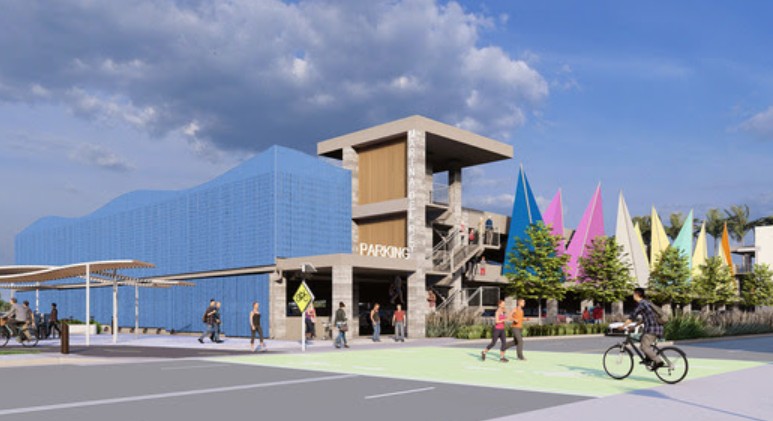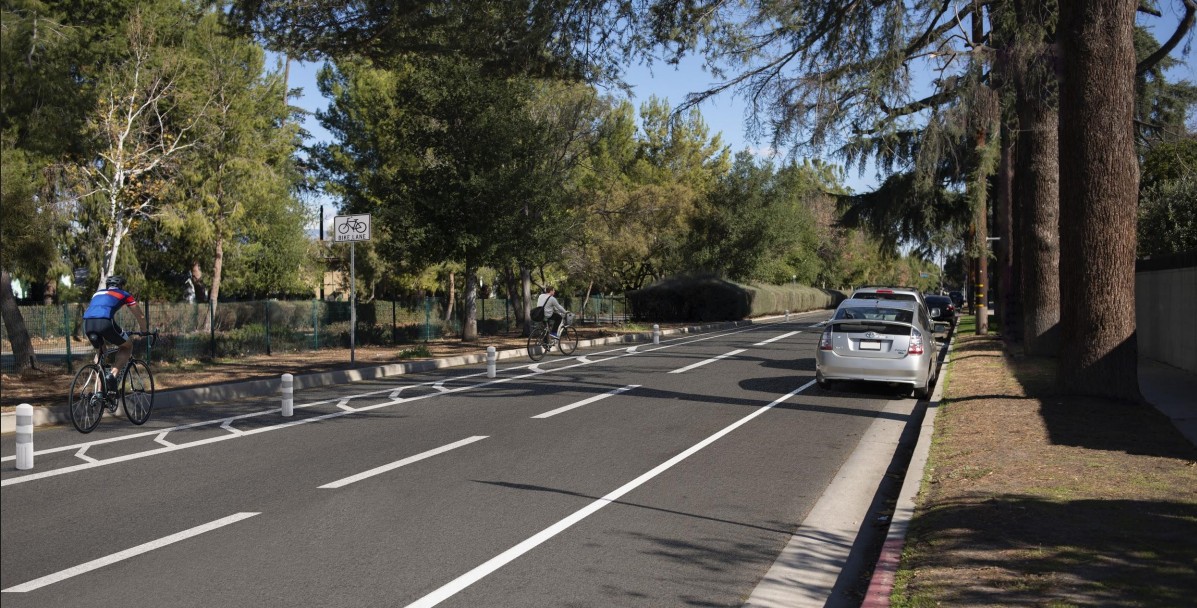Like many stationary vendors around the city, the gentleman who sets up on the residential corner two blocks from my apartment is a neighborhood fixture. He has worked that spot for more years than I can remember, engaging neighbors, offering them fresh goodies, serving as a pit stop for bags of oranges for folks passing through the area, and providing the teens that parade past him after the last bell with healthy after-school snacks. In an area full of renters where neighbors come and go, his constancy and kindness helps make the neighborhood feel like home.
Under the proposed sidewalk vending ordinance finally making its way through city council, his fruit stand would be illegal.
And were a Bureau of Street Services recommendation regarding vendors working within 500 feet of a school to be incorporated, he would also need a background check to ensure he wasn't a sex offender or violent criminal.
In fact, to remain in the residential zone of my neighborhood, the ordinance would require him to have a mobile cart, complete a food handling course, obtain liability insurance, provide the city with a map of his proposed walking route, and take care to spend no more than seven minutes conducting a transaction in one place. He would also have to do more mundane things like obtain and regularly renew his license, get a permit for his cart, and have his cart inspected. And he might need to haul a trash can for customers around with him - although this is unclear, as the ordinance only specifies that "Food Vendors" must provide a trash receptacle and that they cannot dispose of customer trash in existing public receptacles.
He could have a stationary cart, were he to be in a commercial or industrial (rather than residential) zone. But even these "zones" aren't clearly defined in ways that match Los Angeles' unique brand of haphazardness. In lower-income communities of color, where fresh food options are limited and vendors are a welcome source of sustenance, residences, schools, commerce, and industry have been known to share space. Vendors there could thus be at-risk of committing inadvertent infractions, depending on how authorities interpreted the rules.
The failure of the ordinance to match up well with the reality of who many stationary vendors are or how they operate is not that surprising. Nor are they the only vendors for whom the ordinance turns out to be somewhat of a mismatch.
A key reason for the disconnect is that street vendors – as the object of proposed regulation – have largely been conceptualized as interchangeable units that, when well-regulated, can "enliven the city's streetscape by creating a vibrant marketplace."
An amenity, in other words.
They're essentially seen as an amenity.
And not even a particularly well-respected amenity, at that. They have been pushed out of parks and explicitly excluded from the efforts of city initiatives like People St and Great Streets to "activate" and "re-imagine" public spaces. They are not consulted when major changes are planned for the spaces they've occupied for years. They had to sue the city to keep the Fashion District's security staff from seizing and destroying their goods and belongings. And just this week, as blasted by members of the L.A. Street Vendor Campaign and reported by Daniel Hernandez of L.A. Taco, they had to protest being lumped in with "bulky items" in Hollywood's newly christened "Special Enforcement Zone" - a designation that would facilitate the confiscation of their property without due process. The Hollywood stakeholders, who have long fought to restrict vending on the Walk of Fame, were likely emboldened by the extent to which the proposed ordinance would codify the right to create exclusionary districts, regulate the hours and distances vendors would have to maintain from particular venues and events, and push vendors aside without notice or compensation to make way for film productions.
Vendors, however, are firm in the understanding that they are not decorative set pieces.
They are people. Providers. Family members. Valued members of communities.
The relationships they've cultivated, the services they provide, the economic activity they generate, the sense of community they build, and the culture they carry forward are all integral to the rich tapestry that links people of this city to space, place, and each other.
Limiting the number of stationary vendors on commercial blocks to two, requiring vendors in residential areas to be constantly on the move, prohibiting vendors from laying their goods on the ground on blankets (common where vendors have built their own informal districts), and allowing them to be shoehorned into designated vending districts or banned from those spaces outright has the potential to disrupt the organic connections to communities that vendors have worked so hard to forge.
It can also do significant harm.
Considering vendors are vulnerable to being taxed by gang members or shop owners, robbed, or targeted for horrific violence, there is safety in numbers, particularly for the women who comprise the vast majority of vendors. And being able to set up next to a friend makes it easier to ensure that goods and funds are safeguarded when someone needs to take a break. Restricting the number of vendors per block, especially where vending is prevalent, forces vendors to move farther away from the eyes on the street that could help keep them safe. It could also result in them working longer hours in unfamiliar areas to make up for lost revenue, putting them at greater risk for harm to themselves, their livelihoods, or both.
That's not just abstract conjecture.
Take the case of Metro's pilot street vending district in MacArthur Park, launched in March of 2017 at the subway station there.
Not unlike the objectives underlying the proposed city-wide ordinance, the stated goals of Metro's pilot included “minimizing blight and disorder," "eliminating unpermitted street vending," "reducing crime," ensuring ample passage for pedestrians and ADA compliance, and "transforming the station plaza into an inviting community environment."
As discussed at length with Pueblo planning consultant Monique López, however, the privileging of a particular understanding of “order” squelched the vibrancy the pilot program was attempting to manufacture.
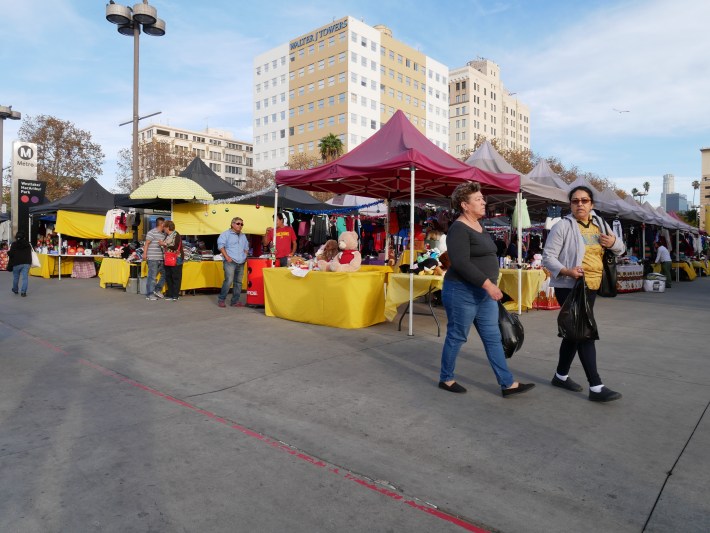
Despite the plaza and the streets surrounding MacArthur Park’s subway station being some of the city’s densest with regard to vending, the program placed just 34 canopied booths (68 vending spaces) on the plaza for use by local vendors. Those that wanted in on the program paid $20 a month for a permit to vend on the plaza and got extra security, access to restroom facilities, a reserved spot, and the ability to vend during set hours without fear of harassment from law enforcement in return.
Within two months of the launch, however, the advantage the program conveyed to participants had begun to shrink. News of the pilot had spread and attracted new vendors to the site, ratcheting up competition between those on the plaza and those that remained on the sidewalks. Some of those who believed they were losing business to vendors outside the program abandoned the plaza and reclaimed their former sidewalk spots.
LAPD crackdowns on the vendors around the plaza helped tip the balance back in favor of pilot program participants.
As vendors were displaced from around the station, the real estate on heavily trafficked nearby streets became more valuable. Some vendors reported to members of the Street Vendor Campaign that they were rising earlier – even sleeping out overnight – to claim spaces. But they also said they were earning less. Customers had begun to keep their distance; although vending had been decriminalized in February, 2017, they apparently feared that lingering to make purchases could attract unwanted attention from officers.
By last November, the crackdowns had become so disruptive that the displaced vendors rallied with organizers from the Street Vendor Campaign outside the LAPD’s Rampart Station to denounce ongoing harassment around the plaza.
Which is not to say the program has been a failure on all fronts - a number of those vending on the plaza appear to have benefited from the program. But the costs it has exacted on the livelihoods of some of the area's more vulnerable vendors are of no small consequence. Especially when considering how narrow the margins are by which those folks get by in a gentrifying community where the cost of living is on the rise.
Should the proposed ordinance be approved, it wouldn't offer vendors much in the way of protection from these kinds of outcomes.
Their goods might be less likely to be confiscated, but the incentive to cite and move folks along for violating district or other space restrictions might be even greater, particularly once the street vendor program has sufficient staff to monitor compliance.
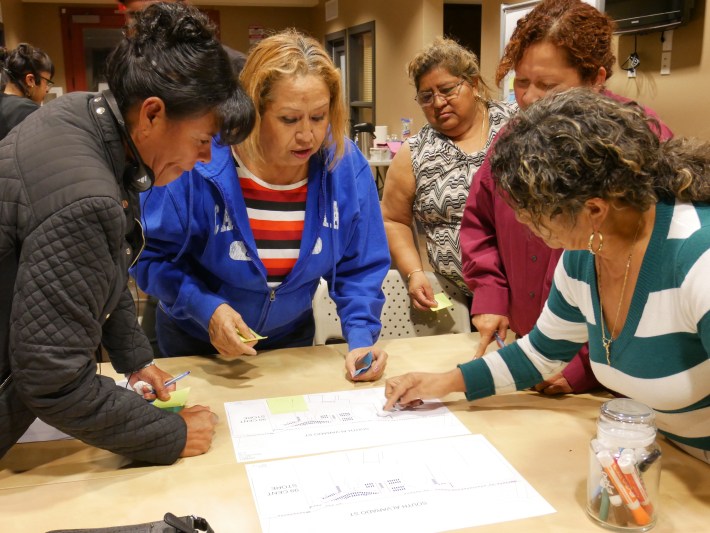
Fearing a future designed to exclude them, vendors in South L.A. have already begun working to envision a framework for a special vending district on their own.
According to Rudy Espinoza, Executive Director of LURN and a leading advocate with the Street Vendor Campaign, they are hoping to show how a vendor-led initiative that better reflected vendors' relationships with their streets could both protect the public right of way and promote vendor inclusion.
Key to this would be granting street vendors a greater role in the decision-making process around districts than the city has given them thus far. There is still room to move with regard to fleshing out specific rules and ensuring harmful policies like LAMC 56.11 (the "bulky item" ordinance) are not included in the framework. The vendors, the Street Vendor Campaign argues, should be part of that process.
The timeline for the finalization of the ordinance remains unclear. History suggests it may yet be a little while. At the end of 2016, fears that the election of Donald Trump would result in ramped up deportations had both prompted elected officials to declare the time had come to decriminalize sidewalk vending and breathed new life into the ongoing effort to establish an ordinance governing the practice. Decriminalization happened soon after, in February of 2017.
Formulation of the ordinance, on the other hand, continued to stall.
The Chief Legislative Analyst's (CLA) office didn't produce its report and recommendations for another nine months. And the Economic Development Committee didn't rule on the CLA's recommendations for another five months. When the committee approved its amended version of the CLA recommendations April 17, formally establishing a tangible pathway for the legalization of vending, they also asked that the City Attorney provide them with a draft ordinance within 60 days. That draft ordinance finally appeared online on July 2, a few weeks after that deadline had passed.
The draft ordinance must first be heard in both the Economic Development and Public Works committees before making its way to the full city council. Those hearings do not appear to have been scheduled, as yet.
***
Find the draft ordinance and all other relevant city council documents dating back to 2013, here. See some of our previous coverage of the street vending here, here, here, and here. Listen to an interview with Pueblo consultant Monique López, who conducted several workshops with vendors impacted by the Metro pilot district program in MacArthur Park, here.
